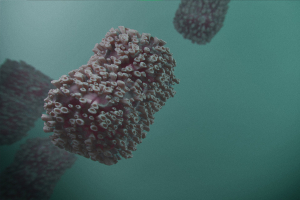
Monkeypox Outbreak
 By Dr Satish K Gupta*
By Dr Satish K Gupta*
Delhi reported its first case of the Monkeypox virus outbreak on July 24, 2022. Important to note that the patient has no history of travel abroad. It suggests local transmission of disease. Earlier three people who contracted this virus had arrived in Kerala from the United Arab Emirates.
The 34-year-old patient, a resident of Delhi, is currently admitted and recovering in the isolation ward of Lok Nayak Hospital. He had attended a Stag party in Himachal Pradesh recently.
How was the diagnosis confirmed?
The diagnosis has been done by the National Institute of Virology (NIV), Pune using PCR.
What is monkeypox?
Monkeypox is an illness caused by the monkeypox virus. It is a zoonotic viral infection which can spread from animals to humans. It can also spread from person to person.
Unlike SarsCov-2 which is RNA Virus, the Monkeypox virus is DNA Virus.
Is it primarily transmitted from Monkeys?
No. It was transmitted primarily from Rodents to Humans in Western African countries mainly Nigeria and Congo.
The disease is called monkeypox because it was first identified in colonies of monkeys kept for research in 1958 in Zaire (now Congo). It was later detected in humans in 1970.
Worldwide Spread
Rodents got exported to the United States and there the virus jumped to piere dogs and then to humans. The current pandemic is witnessing human-to-human transmission primarily through the sexual route.
Mode of transmission
– Close contact and Sexual route is the most important route. Most cases in the world have been seen in gay men. Gay, bisexual, and other men who have sex with men (MSM community) are most at risk
– Other routes like a mouth to mouth; direct skin contact; and fomites can be infective
– Airborne droplet infections are being considered
– Skin lesions, vesicular fluid, and scab scrapings are highly infective
Disease burden
– In nearly 77 Countries more than 16000 cases
– Primarily in Western Europe
Major Symptoms
– Fever
– Backache
– Profound weakness
– Rash
Signs
– Swollen lymph nodes. This is followed or accompanied by the development of a rash which can last for two to three weeks.
– Vesicular Rash on face, palms and soles
– Rash spares trunk
– Symptoms typically last two to three weeks
Incubation period
– 6 to 13 days
Period of infectivity
– 2 days prior to symptoms till all the lesions have healed (count 3 weeks)
Treatment
Symptomatic
Any Effective Anti-viral drug?
– Yes. Tecovirimat
– The drug is available in India. It was developed in the USA primarily to thwart any potential smallpox virus warfare
Vaccine
– The smallpox vaccine provides cross immunity against monkeypox in 85% of cases
– People in the age group of the 50s and late 40s having two big smallpox vaccination marks might be protected
Why is the disease surfacing now?
Because the immunity of the population has gone down. Smallpox vaccination was abandoned in the late ’70s. It cross-protected against Monkeypox
How to protect?
– Isolate the patient till all lesions heal
– Give him clothes with long sleeves and long pants
– Triple layer mask
Treatment
– Antipyretics, Supportive treatment, hydration good diet
– On lesions calamine lotion
– Anti Viral to be reserved for immunocompromised and malnourished likely to have complications
Protection of Healthcare workers (HCWs)
– Mask PPE kit
– Hand washing
– 80%alcohol
– Proper hand washing with soap and water
– Disinfection using 1% Sodium Hypochlorite
– Proper disposal of clothing and linen
Also read: WHO declares monkeypox outbreak as public health emergency of international concern
Top photo: The infamous monkeypox virus created it in Blender as 3D-Art according to scientific presentation but with an artistic approach. Image by Samuel F. Johanns from Pixabay
*Dr. Satish K Gupta is an MD in Medicines, a Visiting Senior Consultant Physician and Internist at Max Super Speciality Hospital, and a Clinical Assistant Professor at GS Medical College, Chaudhary Charan Singh University, Meerut. He is the author of Journey of COVID in India: A Doctor’s Perspective.






Nice & brief article